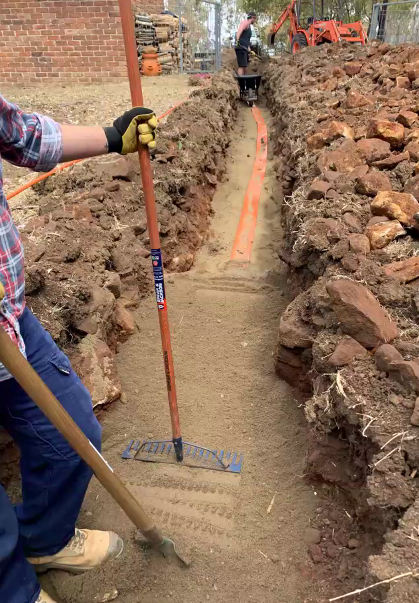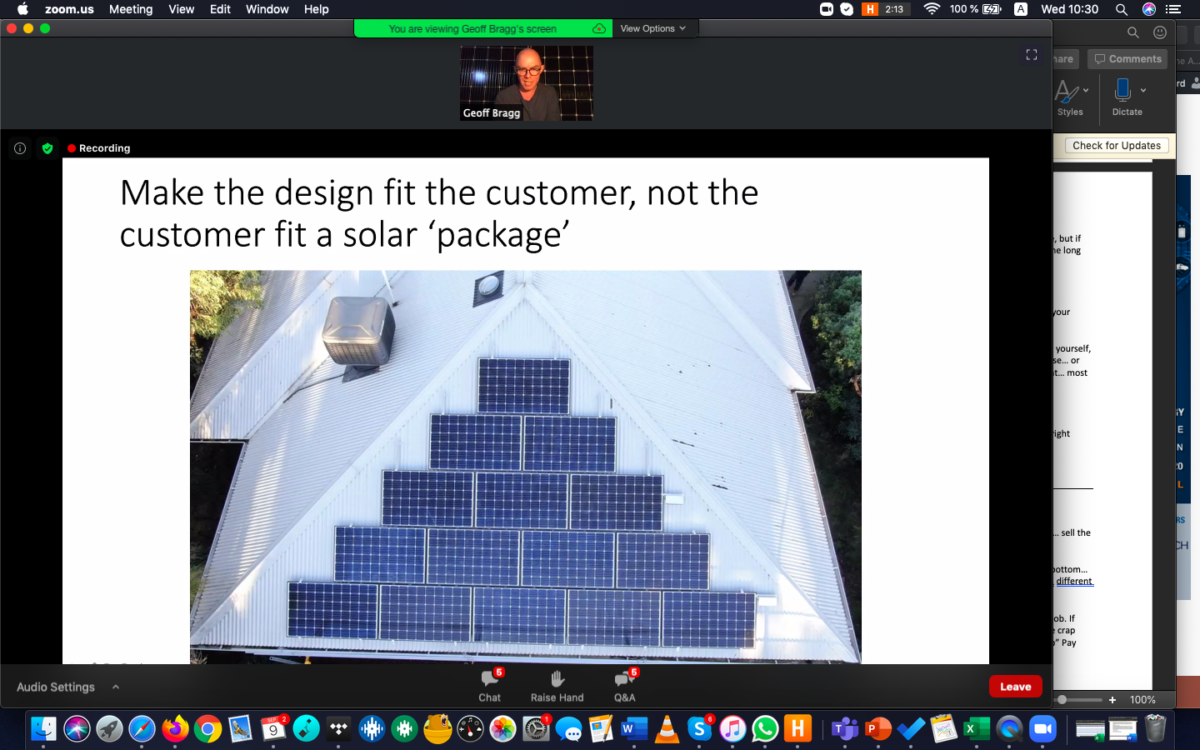Australia’s burgeoning rooftop solar market segment has seen thousands of jobs created, delivered significant savings on electricity bills for millions of householders, and is a force behind the rapid decarbonization of the country’s electricity network. It’s a success story that has been driven, in part, by an extremely competitive installer landscape and low installed system costs.
But to every silver lining there is a cloud, and this has come in the form of race-to-the-bottom pricing and some dodgy solar components and installations. Many of these systems wind up on the 30,000-strong Crap Solar Facebook page – and the ways in which solar retailers, installers and the industry more widely can avoid it was in focus during the final conference session of the Smart Energy Virtual event yesterday.

Photo: pv magazine Australia
The “Solution selling: How to avoid crap solar” session was chaired by Jack “Longy” Long, the co-founder of the quality-focused solar community group the Solar Cutters. Longy brought laconic humour to proceedings, which included seven speakers sharing various ways in which sales and service can help Australian solar companies avoid discounting in pursuit of sales; turning to low quality components to compete on price; and installers being forced into rushed installations.
“You need to know when it’s time to walk away from the sale and find a customer that is better suited to you,” said Nigel Morris, from Solar Analytics. “Everyone wants value, but it means different things to different people.”
The danger of offering discounts was quantified by Jake Warner, the MD of the Penrith Solar Centre. Warner delivered his lively presentation sans-slides but nonetheless persuasively made his case.
“You must know your own numbers and the running costs of your business,” said Warner. He set out that with a 20% net profit margin, if every customer is discounted five percent, then sale volumes have to increase by more than 30% for profitability to be maintained. At a 15% discount, sales have to be increased by more than three times.
The team counts
Warner went on to highlight the importance of a solar retail and installation company’s team in delivering value to customers and avoiding “the crap.” He noted that the presenters at the session all spoke of team rather than “staff or people who work for them.” This, he argued, “will set your business apart.”
Solar Integrity’s Bobbi McKibbin also addressed the importance of a solar business’ team, as informing how it is perceived, and what legacy it is leaving behind. “For us it is all about community… we support our community as much as it supports us.”
McKibbin closed her presentation by teasing the launch of the Australian Women in Solar Energy Group, which is looking to attract more women to the country’s solar industry and to create a space in which they can “support one another, collaborate, have fun, and share our wins.”

Photo: Geoff Bragg
Geoff Bragg, a Smart Energy Council director provided attendees with some concrete steps that they can take to avoid delivering a crap solar system. The industry veteran said that doubling checking that a solar system is operating as intended before leaving the site can avoid underperformance and callbacks. He said Live Voltage Checks and Voltage Rise Checks can avoid curtailment or clipping during the hours of peak output.
Solar+storage
Battery systems were also touched on by Bragg, who advised installers to test the full extent of a solar battery’s functionality, including things like “islanded” operation, and making the extra effort to set up a customer portal so that they can feel comfortable with its operation. “A lot is left to the customer to work out, so you can set up an account for someone and take that stress away from the customer,” said Bragg.
Korean battery supplier LG Chem sponsored the session and it opened with a presentation from the company’s Philip Crotty. He pointed to a significant advantage of battery systems and hybrid inverters, in that they can allow for larger rooftop PV systems to be installed – effectively “turning winter [PV output] into summer.”
Crotty said that when hooked up to Goodwe hybrid inverters, a battery can allow up to 8.5 kWp of rooftop PV to be installed, with only a 5 kWp output visible to the network operator. For some SolarEdge systems that can be increased further to 11.5 kWp or even up to 20.5 kWp using the SolarEdge 10 kWp HD Wave.
Crotty addressed warranties, noting that they may be of limited value in some cases. “Anybody can write a warranty, but you have to multiple it by the trust factor, and we [LG Chem] have certainly got the scale and history to have confidence with us.” Warranties can be voided by crap installation, such as in the full sun, he said earlier in his presentation.
The Solar Cutters’ “Longy” closed out the session with a simple takeaway: “Keep it ‘cutter spec’ and keep it off Crap Solar.”
This content is protected by copyright and may not be reused. If you want to cooperate with us and would like to reuse some of our content, please contact: editors@pv-magazine.com.









By submitting this form you agree to pv magazine using your data for the purposes of publishing your comment.
Your personal data will only be disclosed or otherwise transmitted to third parties for the purposes of spam filtering or if this is necessary for technical maintenance of the website. Any other transfer to third parties will not take place unless this is justified on the basis of applicable data protection regulations or if pv magazine is legally obliged to do so.
You may revoke this consent at any time with effect for the future, in which case your personal data will be deleted immediately. Otherwise, your data will be deleted if pv magazine has processed your request or the purpose of data storage is fulfilled.
Further information on data privacy can be found in our Data Protection Policy.